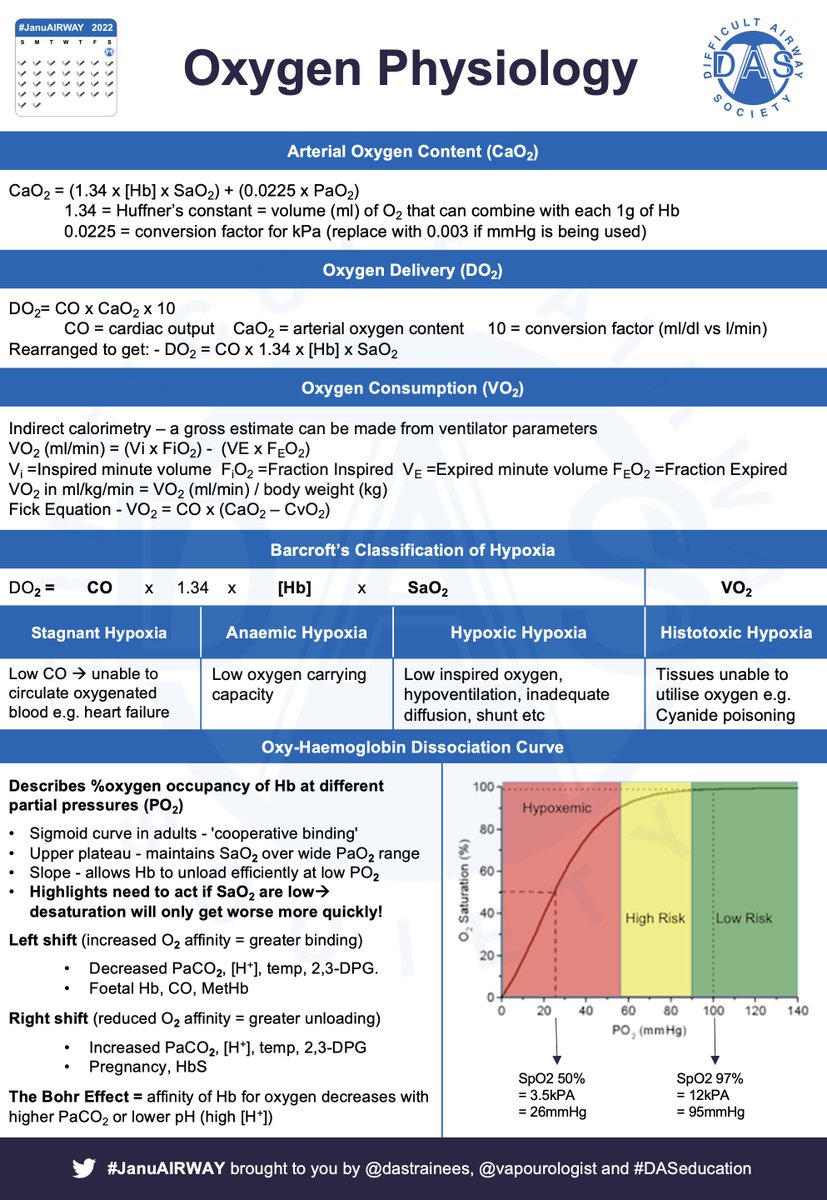
#JanuAIRWAY Day 3. The Difficult Airway. Many definitions. NAP4 has a procedural framework. Useful but not the whole picture. @HansHuitnik and Bouwan’s seminal pubmed.ncbi.nlm.nih.gov/25511477/ introduces ‘complexity factors 1/7 

Complexity factors make easy things difficult e.g. operator experience, location, time pressure. Must be considered. @Huitink also suggest ditching the term ‘difficult’ in favour of ‘basic & advanced’ Here’s a #OnePager covering the basics
#JanuAIRWAY #FOAMed 2/7
#JanuAIRWAY #FOAMed 2/7

Our airway assessment aims to determine difficulty of management. We want to use our holistic assessment (Hx, Ex and Ix) answer several questions.
Here’s a #OnePager outlining some of the key information we need
#FOAMed #JanuAIRWAY 3/7
Here’s a #OnePager outlining some of the key information we need
#FOAMed #JanuAIRWAY 3/7

After complexity factors, we need situational awareness. Imagine ‘thinking zones’ emanating from the patient.
Patient (anatomy, physiology)
Airway manager (experience, fatigue, stress)
Team (experience, number)
Environment (time, familiarity, safety)
#JanuAIRWAY 4/7

Patient (anatomy, physiology)
Airway manager (experience, fatigue, stress)
Team (experience, number)
Environment (time, familiarity, safety)
#JanuAIRWAY 4/7


When we want to integrate our assessment info and situational awareness, the cynefin framework (by @snowded) and the Johari window can help our mental model for decision-making in ‘difficult airways’.
We’ll talk more about decision-making later this month! #JanuAIRWAY 5/7
We’ll talk more about decision-making later this month! #JanuAIRWAY 5/7

Here are some papers / links that you might find interesting: -
a.nationalauditprojects.org.uk/NAP4_home
b.pubmed.ncbi.nlm.nih.gov/25511370/
c.pubmed.ncbi.nlm.nih.gov/25511477/
If you have any others of interest, tweet them to us for inclusion next time!
#JanuAIRWAY 6/
a.nationalauditprojects.org.uk/NAP4_home
b.pubmed.ncbi.nlm.nih.gov/25511370/
c.pubmed.ncbi.nlm.nih.gov/25511477/
If you have any others of interest, tweet them to us for inclusion next time!
#JanuAIRWAY 6/
Hope that helps. Tomorrow we'll look at investigations /ultrasound and how we can use them to assess airways. See you then! #JanuAIRWAY 7/7
*Disclaimer: Inclusion of content (equipment, techniques and scoring systems etc.) in #JanuAIRWAY does not constitute DAS endorsement
*Disclaimer: Inclusion of content (equipment, techniques and scoring systems etc.) in #JanuAIRWAY does not constitute DAS endorsement
• • •
Missing some Tweet in this thread? You can try to
force a refresh










